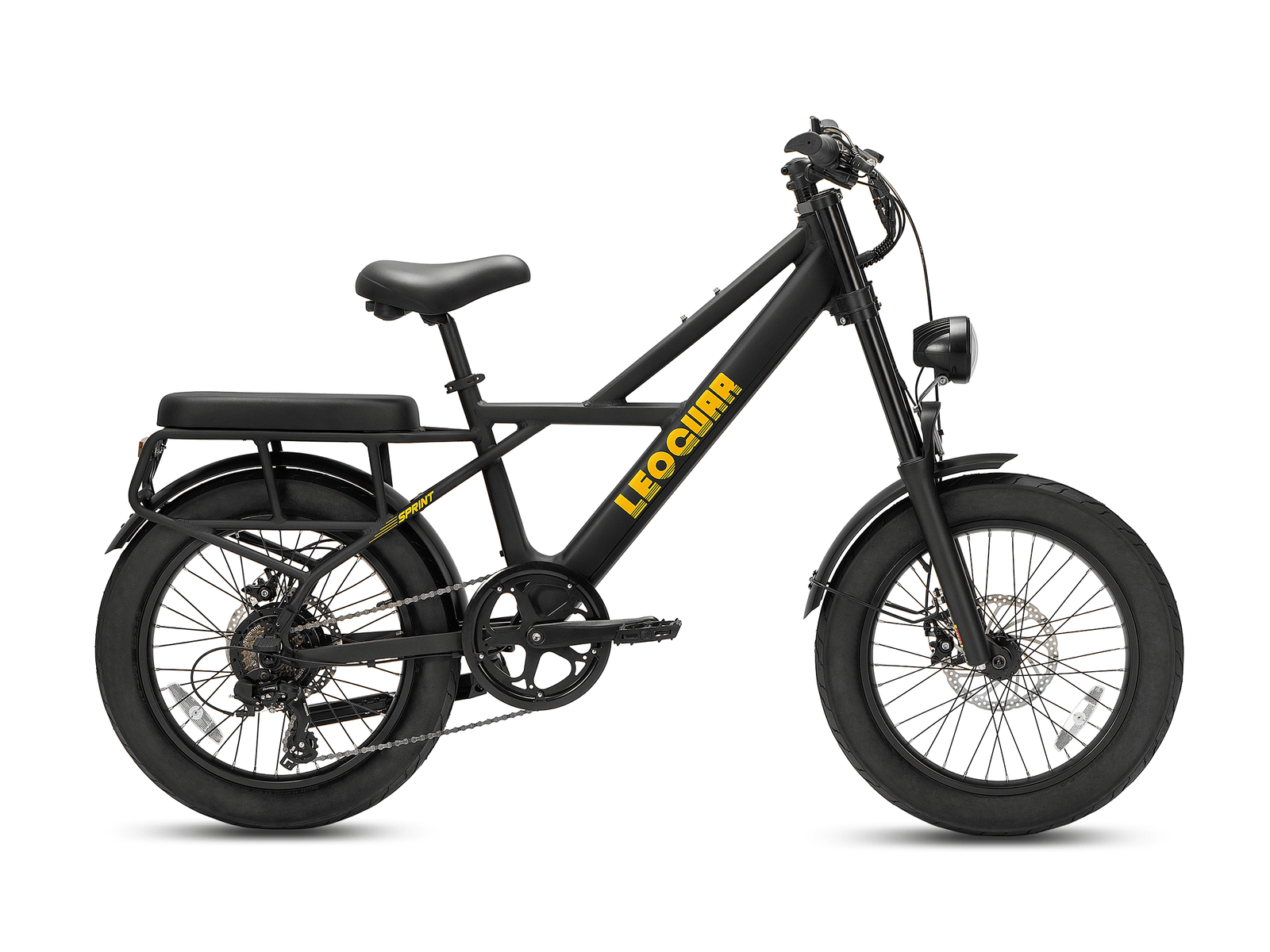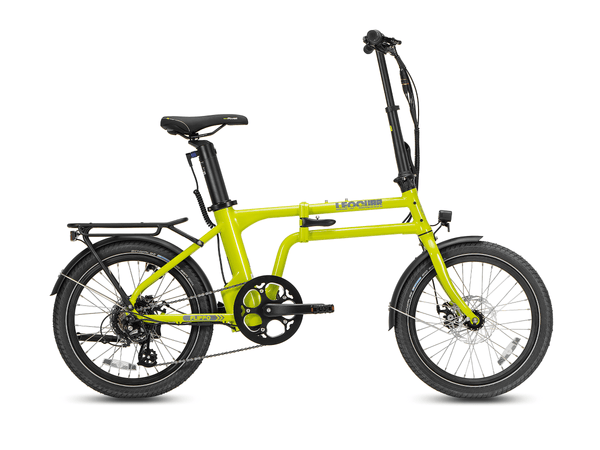
Safest Electric Bikes: Which E-Bikes Are Safe and Won’t Catch Fire?
Your Valid Concern
You've seen the headlines: dramatic videos of e-bike batteries catching fire. With the incredible growth in electric bike popularity, it's natural and responsible to be concerned about safety. Electric bikes for adults, commuters, and even delivery riders are now a common sight in urban areas, making it more important than ever to understand what makes an electric bike truly safe. Your concern is valid. The news stories, while alarming, often involve low-quality, uncertified products that represent a fraction of the market. The reality is, the vast majority of electric bikes are safe. The key is knowing what to look for.
This isn't about creating fear; it's about providing clarity. We're here to cut through the noise and give you the expert knowledge to distinguish a high-risk product from one of the safest electric bikes on the market. This guide will empower you to confidently select, purchase, and maintain an e-bike that is safe, reliable, and won't catch fire.
The Core Issue
To understand how to avoid risk, it helps to know why lithium-ion batteries can fail. The issue isn't with the technology itself, but with how it's made and controlled. Several factors contribute to battery-related fire incidents.
Low-Quality Manufacturing: This is the number one problem. To hit impossibly low price points, some manufacturers use cheap materials, poor lithium-ion cells, and bad assembly practices. These uncertified batteries and chargers lack the strong safety features of their certified counterparts.
Poor Battery Management System (BMS): Think of the BMS as the battery's brain. A quality BMS constantly watches the battery's state, protecting it from overcharging, over-discharging, and overheating. In cheap batteries, the BMS can be unreliable or missing, leaving the battery open to dangerous conditions.
Physical Damage: A big impact from a crash or a hole in the battery casing can cause an internal short-circuit, leading to a rapid, uncontrolled release of energy.
Improper Charging: Using a charger that is not designed for your specific battery is extremely dangerous. An incompatible charger can deliver the wrong voltage or current, bypassing the BMS and leading to overheating and fire.
These risks are not just theoretical. As noted in U.S. Consumer Product Safety Commission (CPSC) reports, injuries related to micromobility devices, including e-bikes, are on the rise, with fire incidents from faulty batteries being a significant concern. Whether you're choosing your first electric bicycle or upgrading to a more powerful model, understanding these risks is key to making a safe decision.

The Ultimate Safety Checklist
Choosing one of the safest electric bikes boils down to checking its quality before you buy. Forget confusing marketing talk and focus on real proof of safety. This checklist is your guide.
The Gold Standard
The most critical factor in e-bike electrical safety is third-party certification. These aren't just stickers; they are proof that the bike's entire electrical system has undergone strict testing for fire and electrical shock hazards.
UL 2849: The Most Important Certification. If you remember one thing, remember this. UL 2849 is the complete safety standard for the entire e-bike electrical system. This includes the battery pack, the charger, and the motor controller. A bike certified to UL 2849 has been tested as a complete system to ensure all parts work together safely. This is the gold standard you should demand.
UL 2271: The Battery-Specific Standard. This certification applies specifically to the battery pack itself. It ensures the battery is built to withstand impact, overcharging, and other potential hazards. While good, UL 2849 is better because it tests the battery in combination with the bike and charger. You can find these certification marks on the bike frame, the battery itself, or listed in the product's official specifications online. As per guidance from Consumer Reports, we strongly recommend you only purchase e-bikes that are certified to these UL standards.

Brand and Retailer Trust
Beyond certifications, the reputation of the brand and the seller matters. Well-known brands like Aventon, Rad Power Bikes, Specialized, and Trek invest heavily in engineering, quality control, and securing UL certification. They have a brand reputation to protect and provide customer support and warranties. Always purchase from the brand directly or from an authorized dealer. Avoid unknown sellers on third-party marketplaces, as you have no way to verify the product's origin or safety. To make it simple, here is a clear comparison:
| Safety Green Flags | Safety Red Flags |
|---|---|
| Clearly advertised UL 2849 certification | No mention of any safety certifications |
| Well-known, trusted brand | Unknown or "no-name" brand |
| Sold by an authorized dealer or direct from the brand | Sold on unverified third-party marketplaces |
| Clear and detailed specifications | Vague marketing terms, "high capacity" without numbers |
| Positive reviews mentioning reliability and support | User reviews complaining of overheating or charging issues |
| Provides a clear warranty and customer service | "Too good to be true" pricing |
Beyond the Battery
True e-bike safety extends beyond the electrical system. An e-bike is heavier and faster than a regular bicycle, placing greater demands on its mechanical parts. For electric commuter bike riders who rely on their e-bikes daily, especially in stop-and-go city traffic, dependable components like brakes and lights are not optional—they’re critical for everyday safety. Here are other critical features that define the safest electric bikes.
Braking System: Because of the extra weight and speed, superior braking is non-negotiable. Hydraulic Disc Brakes are the standard for safe, modern e-bikes. They provide significantly more stopping power with less hand effort compared to their mechanical counterparts, offering consistent performance in all weather conditions. Motor Cutoff Sensors are another crucial feature. When you squeeze the brake levers, these sensors instantly cut power to the motor, ensuring you are not fighting against the motor's power when you need to stop.
Visibility and Lighting: Being seen is as important as seeing. Integrated Lights that run off the main battery are a must-have. You never have to worry about dead batteries for your lights, and they are always with the bike. Brake Lights and Turn Signals are increasingly common on commuter and family-oriented e-bikes. These features dramatically improve your ability to communicate your intentions to cars and other road users.
Frame and Tires: The bike's foundation must be solid. A well-engineered frame provides stability at speed and under load. Look for tires appropriate for your intended use, with features like puncture resistance to prevent sudden flats, which can be especially dangerous on a heavier e-bike.
E-Bike Class and Speed: In the U.S., electric bikes are generally categorized into three classes to regulate usage and ensure e-bike safety standards across all rider groups.
- Class 1: Pedal-assist only, with a maximum assisted speed of 20 mph.
- Class 2: Throttle-assisted, with a maximum motor-powered speed of 20 mph.
- Class 3: Pedal-assist only, with a maximum assisted speed of 28 mph.
For beginners, families, or those riding in crowded areas, a Class 1 or Class 2 e-bike is often the safest choice, providing a more controlled and predictable experience.
Ownership and Responsibility
Your role in e-bike safety doesn't end after the purchase. Responsible ownership is the final, critical piece of the puzzle. Following proper charging, maintenance, and storage procedures will ensure your bike remains safe for years.
Smart Charging Habits
This is where owners have the most direct impact on safety. According to safety tips from the FDNY, who have responded to numerous battery fires, proper charging is most important.
Do: Always use the original manufacturer's charger that came with your bike. Charge in a dry, well-ventilated area away from flammable materials. Stay nearby while charging, and unplug the charger once the battery is full.
Don't: Never charge your battery overnight or while you are sleeping. Don't charge in extreme temperatures (below freezing or in direct, hot sunlight). Never use or attempt to charge a battery that is swollen, leaking, or has been damaged in a crash.
Regular Maintenance Checks
A safe bike is a well-maintained bike. Before each ride, perform a quick check. We recommend a quick visual inspection of the battery casing for any signs of damage or swelling. Squeeze your brake levers to ensure they feel firm and responsive. Check your tire pressure. Turn on your lights to confirm they are working. According to recommendations from orthopaedic surgeons, regular equipment inspection is a key step in injury prevention.
Proper Storage
Store your e-bike and its battery in a dry, temperature-controlled environment. Avoid leaving it outdoors for extended periods, where it can be exposed to rain, snow, or extreme heat, all of which can damage the electrical components over time. If storing for the winter, most manufacturers recommend keeping the battery at a partial charge (around 40-70%) and storing it indoors. Following these practices extends your electric bike’s lifespan and minimizes long-term risk, especially for riders in varying climates.

Your Safe Journey Starts Now
The world of electric bikes offers incredible freedom, fun, and utility. While the headlines about battery fires are concerning, they are not the whole story. The path to safe e-biking is paved with knowledge, not fear. By prioritizing bikes with UL 2849 certification, choosing trusted brands, and understanding the importance of quality brakes and lights, you are already ahead of the curve.
The safest electric bikes are those that combine certified electrical systems with strong mechanical components. When you pair a well-built machine with responsible ownership practices—smart charging, regular maintenance, and proper storage—you reduce risk and increase enjoyment. Your confident and safe e-bike journey starts with the informed choice you make today. Look for models that combine robust certification with rider-centric features—these are often considered the best electric bikes for both safety and performance. Ride on.
Frequently Asked Questions
What is the safest electric bike certification to look for?
UL 2849 is the most important certification for e-bike safety. This standard tests the entire electrical system including the battery, charger, and motor controller as one complete unit. It's the gold standard that ensures all components work together safely.
Are expensive e-bikes always safer than cheaper ones?
Not necessarily, but price often reflects quality. The safest electric bikes typically cost more because they use better materials, certified components, and undergo proper testing. However, focus on certifications like UL 2849 rather than price alone when determining safety.
Can I use any charger with my e-bike battery?
No, never use a different charger than the one that came with your e-bike. Using an incompatible charger can deliver wrong voltage or current, bypassing safety systems and potentially causing overheating or fire. Always stick to the manufacturer's original charger.
How often should I inspect my e-bike for safety issues?
Perform a quick safety check before each ride. Look for battery damage or swelling, test your brakes, check tire pressure, and ensure lights work. For deeper maintenance, follow your manufacturer's schedule, typically every few months or after a certain number of miles.
What should I do if my e-bike battery gets damaged in a crash?
Stop using the battery immediately if it shows any signs of damage, swelling, or leaking after a crash. Don't attempt to charge or use a damaged battery as it can be extremely dangerous. Contact the manufacturer or a certified repair shop for proper disposal and replacement.
Is it safe to ride an electric bike in the rain?
Yes—most modern electric bikes are water-resistant, especially those with IP-rated batteries and motors. However, avoid submerging components or charging in wet conditions.











































Leave a comment